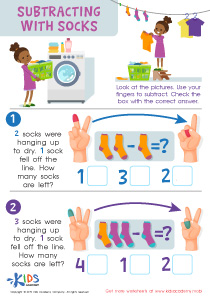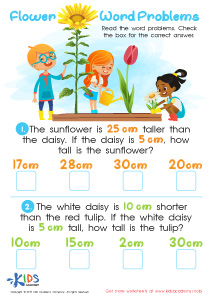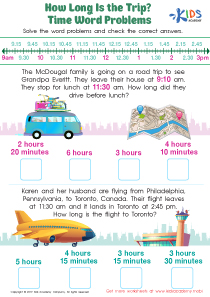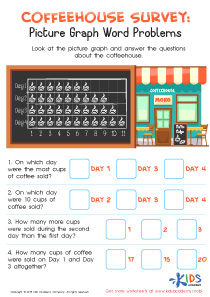Easy Two-step Word Problems Worksheets for Ages 3-8
5 filtered results
-
From - To
Discover our Easy Two-Step Word Problems Worksheets, specially designed for children aged 3 to 8! These engaging worksheets help young learners develop their critical thinking and problem-solving skills through fun and relatable scenarios. Each worksheet presents clear and age-appropriate math challenges that encourage kids to think through problems systematically. With colorful illustrations and easy-to-follow instructions, children will enjoy practicing their math skills while building confidence. Perfect for both classroom use and at-home learning, our worksheets provide a great way to support early math education. Explore the collection and watch your child flourish in their understanding of two-step word problems today!
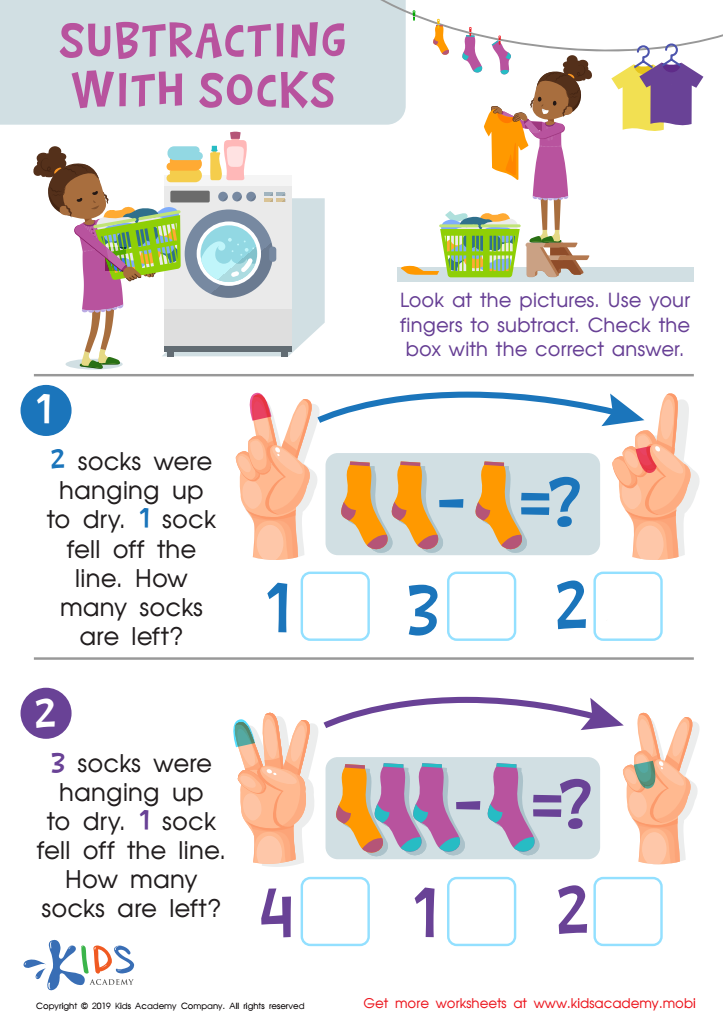

Subtracting Socks Worksheet
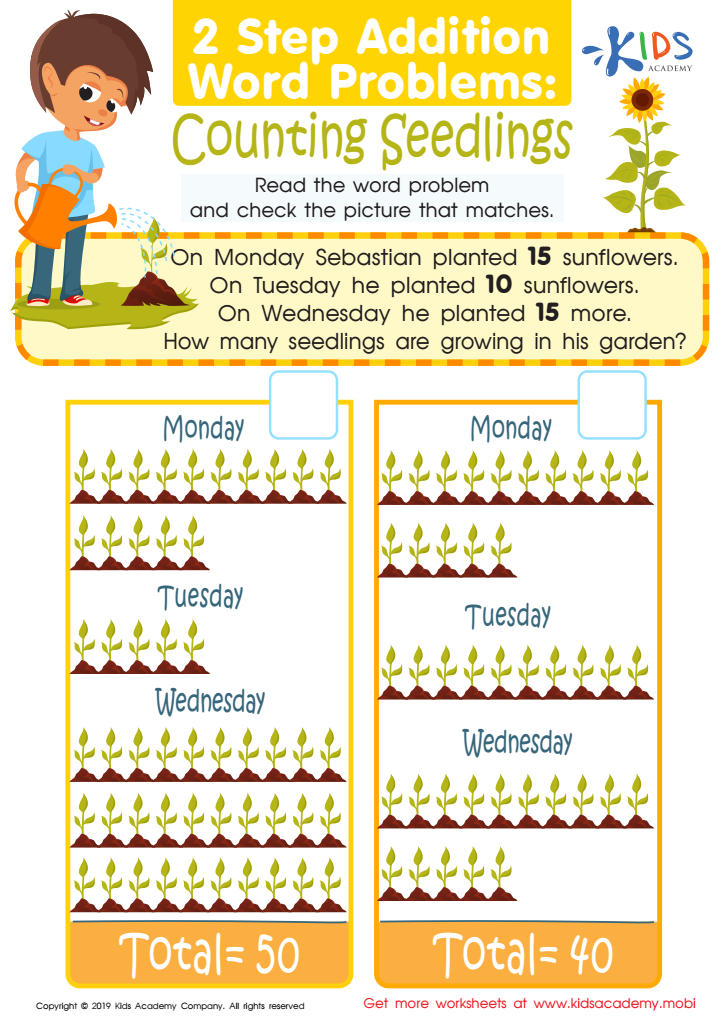

Counting Seedlings Worksheet


Using Number Sentences to Solve Problems Worksheet
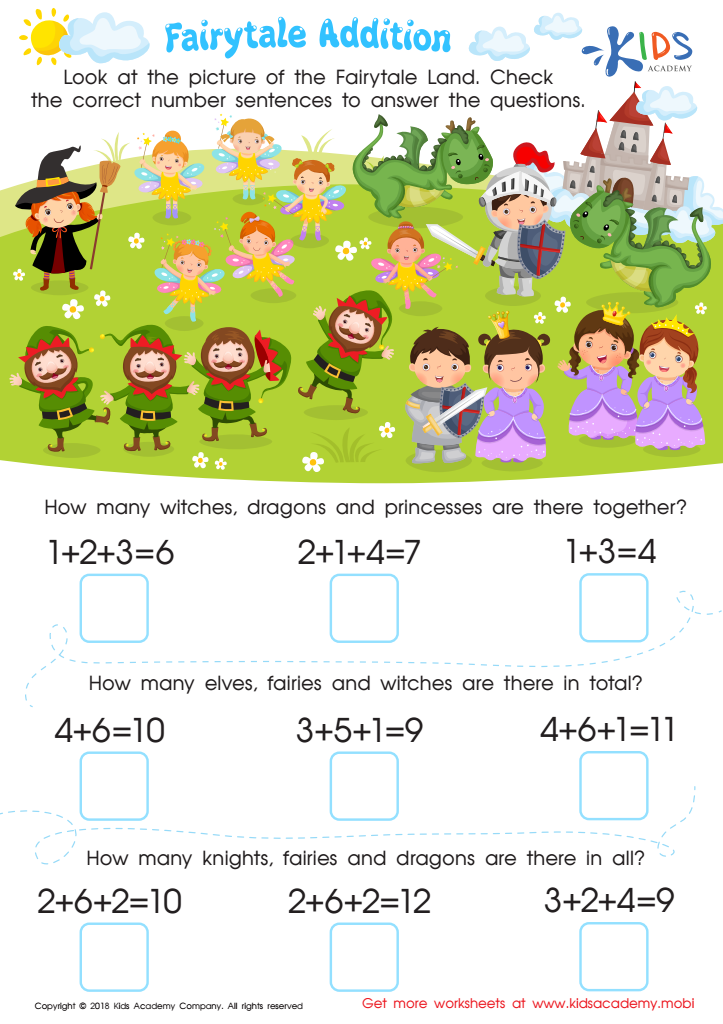

Fairytale Addition Worksheet
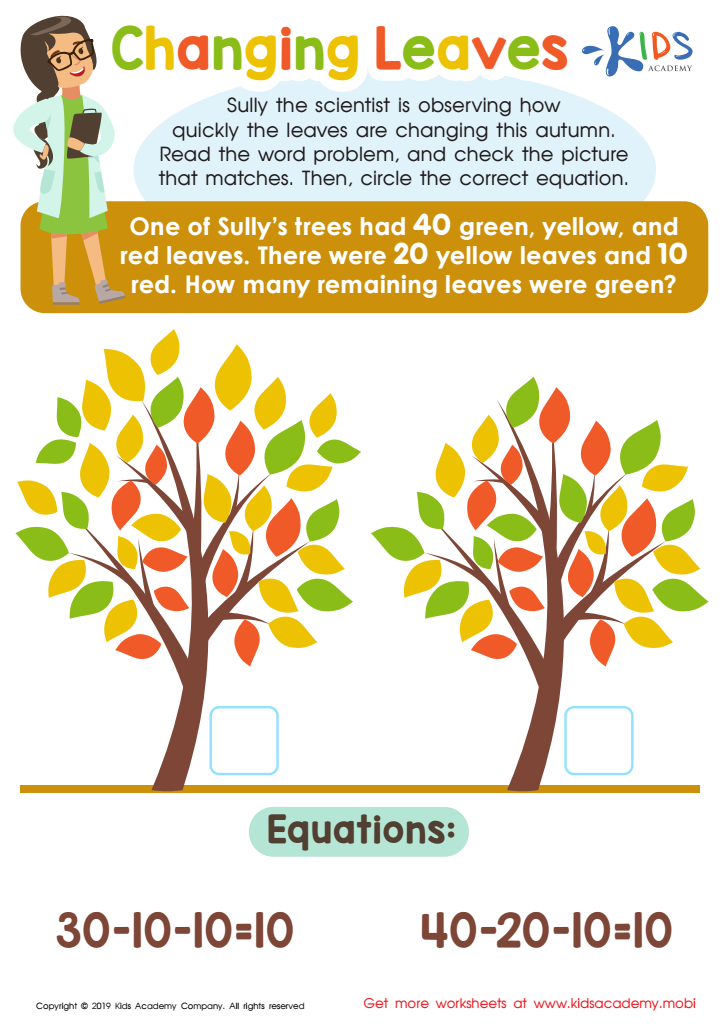

Changing Leaves Worksheet
Easy two-step word problems are essential for young learners aged 3-8 as they lay the groundwork for critical thinking and problem-solving skills. At this developmental stage, children are naturally curious and eager to explore mathematical concepts. Engaging with these problems fosters logical reasoning and promotes a deep understanding of numbers.
Firstly, two-step word problems enhance reading comprehension. Children must interpret the language used in the problems, which helps them connect math with real-life contexts. This integration of literacy and numeracy is crucial; it makes math more relatable and enjoyable, encouraging a lifelong love for learning.
Furthermore, tackling these problems empowers students to break down complex tasks into manageable parts. This skill is not only applicable in mathematics but can also be applied across other subjects and life experiences, allowing them to navigate challenges effectively.
Finally, involving parents and teachers in this learning process creates a supportive environment. When adults demonstrate enthusiasm for problem-solving, children are more likely to mimic that engagement. This positive reinforcement nurtures confidence, paving the way for future success in math and related disciplines. In summary, two-step word problems support cognitive development, improve literacy, and prepare young learners for complex challenges ahead.
 Assign to My Students
Assign to My Students




